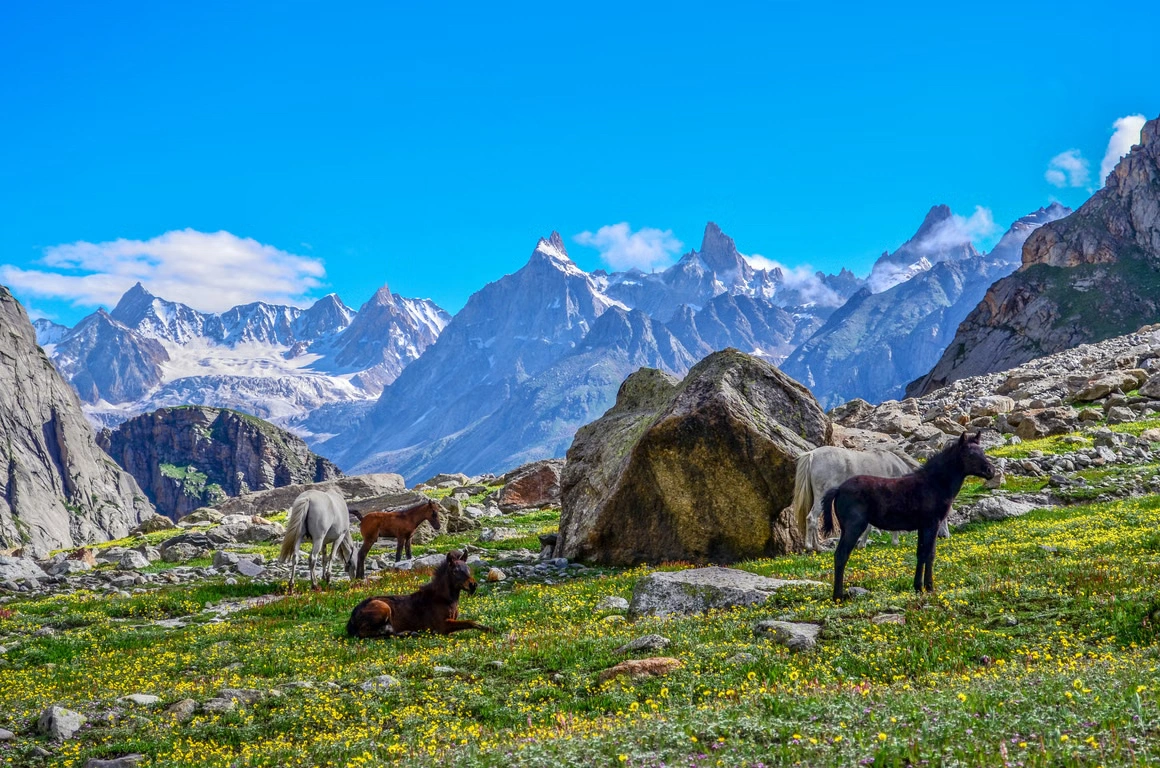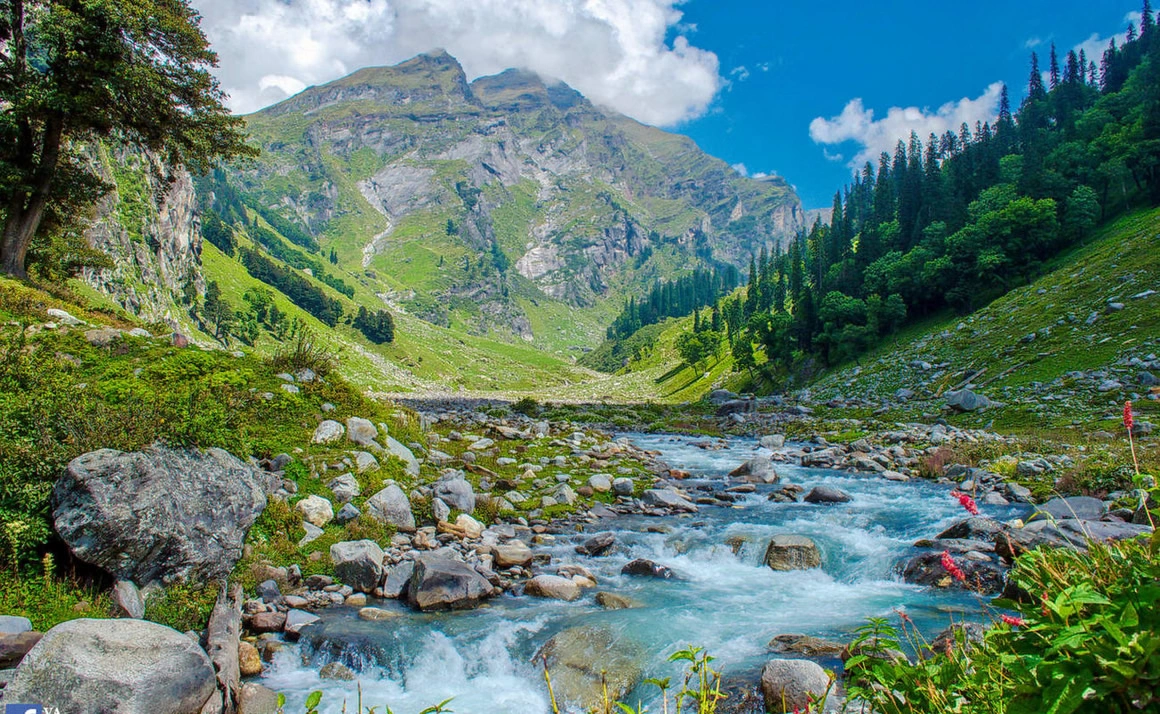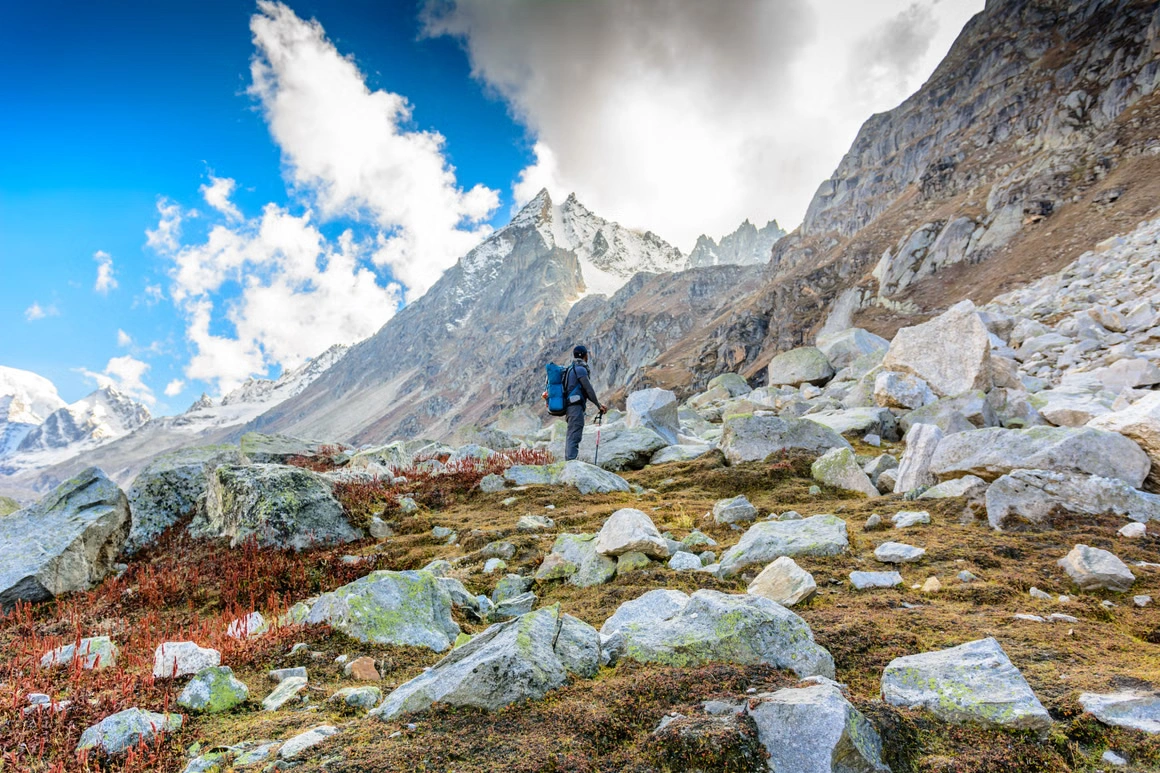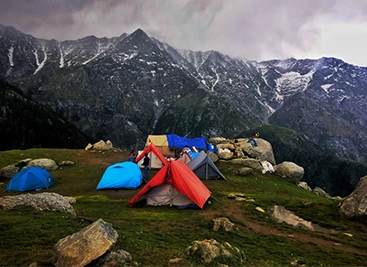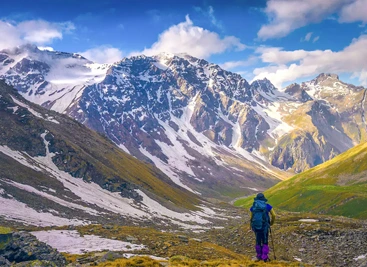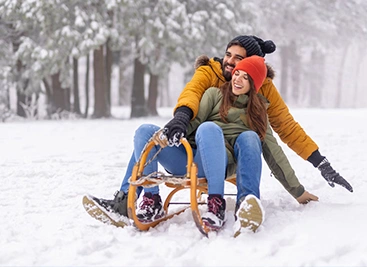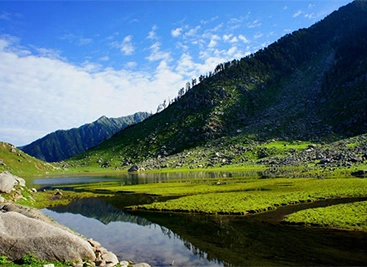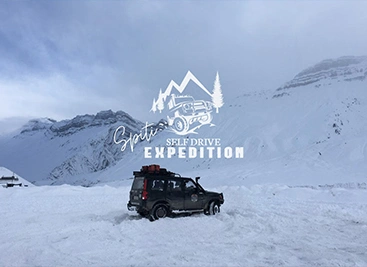The best time for the Hampta Pass Trek is from mid-June to September. During this period, the snow melts, the trails are lush and green, and the weather is perfect for trekking. Early in the season (June–July), you'll still find snow at higher altitudes, while August–September offers clear skies and vibrant landscapes.
The Hampta Pass Trek is considered easy to moderate, making it perfect for beginners and intermediate trekkers. It involves gradual ascents, river crossings, and high-altitude trails. Basic fitness and mental preparedness are enough to enjoy this Himalayan adventure.
The trek reaches a maximum altitude of 14,010 feet (4,270 meters) at Hampta Pass. At this elevation, the air gets thinner, so acclimatization in Manali before starting the trek is highly recommended.
The total trekking distance is around 25 kilometers, usually covered over 4 to 5 days. Each day involves 5–8 km of trekking through scenic valleys, meadows, and mountain passes.
No, prior trekking experience is not mandatory. Hampta Pass is beginner-friendly. However, maintaining a basic level of fitness through walking, jogging, or cardio a few weeks before the trek is advised.
Essential items include warm clothes, waterproof jackets, trekking shoes, personal medications, a first-aid kit, reusable water bottles, and a good quality backpack. Avoid overpacking—lightweight gear is always better in the mountains.
Mobile network is mostly unavailable during the trek. You may get patchy signals near Jobra and Chikka, but don’t rely on it. Inform your family before the trek and enjoy a digital detox amidst nature.
You’ll find basic toilet tents at campsites, but no permanent washrooms on the trail. Carry biodegradable toiletries and maintain hygiene responsibly.
Yes, it’s safe if you're traveling with a reliable operator like Trivikal. Our team ensures expert guidance, proper gear, and 24x7 support to make your solo Himalayan experience secure and memorable.
Yes, Trivikal provides all meals and accommodation during the trek. You’ll stay in alpine or dome tents with sleeping bags and mats. Meals are freshly prepared, nutritious, and designed to keep you energized.

